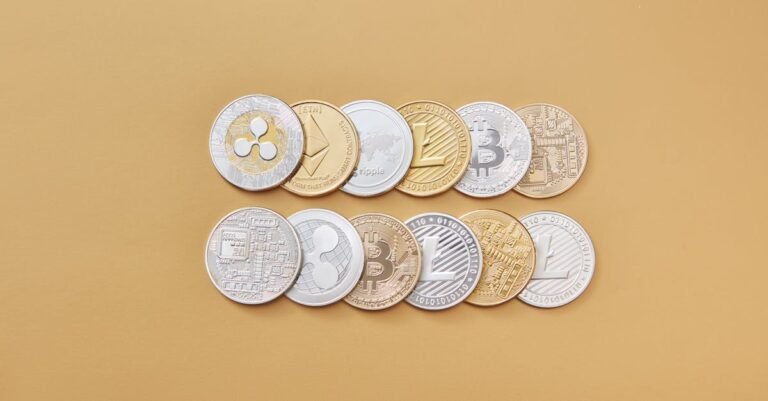Heard About Huge ICO Gains? Here’s How to Jump In Without Getting Burned
Let’s be honest, the crypto world buzzes with stories of people hitting it big with Initial Coin Offerings, or ICOs. You hear about a new altcoin project, people invest early through its ICO, and suddenly, their investment multiplies like crazy. It sounds incredibly tempting, right? Finding that hidden gem before everyone else does, getting in on the ground floor of potentially the next revolutionary blockchain project… it’s the stuff crypto dreams are made of.
But hold on a second. Before you dive headfirst into the first flashy ICO website you see, let’s talk reality. The world of altcoin ICOs is often compared to the Wild West for a reason. Alongside genuine opportunities lie pitfalls, scams, and projects destined to fail. It’s exciting, yes, but also incredibly risky. Investing without knowing what you’re doing is like navigating a minefield blindfolded.
So, how do you chase the potential rewards without falling victim to the risks? How can you participate in altcoin ICOs safely? That’s exactly what we’re going to explore together. Think of this as your friendly guide, sharing insights and practical steps to help you navigate the ICO landscape with more confidence and less anxiety. We’ll break down what ICOs are, how to spot promising projects (and avoid the duds), and the essential security measures you absolutely need to take. Ready to learn how to explore this exciting space responsibly?
Understanding Altcoin ICOs: The Basics and Beyond
Before we even think about sending any money anywhere, we need to get a solid grasp of what we’re dealing with. What exactly is an Initial Coin Offering, especially when it involves altcoins? Think of it like crowdfunding, but specifically for the cryptocurrency world. A new blockchain project needs funding to develop its technology, build its team, and market its product. Instead of seeking venture capital like traditional startups, they offer brand new crypto tokens to the public in exchange for established cryptocurrencies like Bitcoin (BTC), Ethereum (ETH), or stablecoins like USDT.
These new tokens being offered belong to “altcoins,” which is basically any cryptocurrency other than Bitcoin. Ethereum is technically an altcoin, but often considered in its own category. We’re usually talking about tokens for newer projects built on existing blockchains (like Ethereum or Solana) or projects launching their own unique blockchain. The allure is clear: if the project succeeds and its token becomes valuable, early ICO investors could see substantial returns. You’re essentially betting on the future success of the project by buying its native token at the earliest possible stage.
Why do projects choose the ICO route?
- Fundraising: It’s a direct way to raise capital from a global pool of potential users and investors, bypassing traditional financial gatekeepers.
- Community Building: An ICO can create an initial community of token holders who are invested (literally) in the project’s success. They become early adopters, testers, and advocates.
- Decentralization: Distributing tokens widely through an ICO can help decentralize the network or platform from the start, aligning with the core ethos of blockchain technology.
- Network Effects: Getting the token into many hands early can help bootstrap the network effect needed for the platform or application to gain traction.
However, the excitement comes with significant, unavoidable risks:
- Scams (Rug Pulls): Unfortunately, many ICOs are outright scams. Project creators might hype up a fake project, collect funds, and then disappear, leaving investors with worthless tokens. This is often called a “rug pull.”
- Project Failure: Many legitimate projects still fail. They might run out of funding, face technical challenges they can’t overcome, fail to gain market adoption, or simply be based on a flawed idea. Remember, most startups fail, and crypto startups are no different, perhaps even riskier.
- Extreme Volatility: Even if a project is legitimate and survives, the price of its token can be incredibly volatile, especially in the early days after the ICO. Prices can swing wildly based on hype, market sentiment, and news. You could lose a significant portion of your investment very quickly.
- Lack of Regulation: The ICO space is still largely unregulated in many parts of the world. This lack of oversight makes it easier for scammers to operate and leaves investors with little recourse if things go wrong. Regulatory crackdowns can also suddenly impact a project’s viability or token value.
- Liquidity Issues: Sometimes, even if you get tokens, there might not be anywhere to easily trade them, or the trading volume might be so low that you can’t sell them at a fair price when you want to.
It’s also crucial to understand the type of token being offered. Broadly, they fall into two categories, though the lines can sometimes blur:
- Utility Tokens: These tokens are designed to be used within the project’s ecosystem. Think of them like access keys or internal currency. They might grant you access to a service, voting rights in platform governance, the ability to pay fees, or rewards for participating in the network. The value of a utility token is theoretically tied to the demand for the project’s actual service or platform. Most ICOs aim to offer utility tokens.
- Security Tokens: These tokens represent ownership in the underlying company or project, entitlement to dividends or profits, or a debt owed by the issuer. They function much more like traditional securities (stocks, bonds). Security tokens are subject to much stricter financial regulations, and projects issuing them must comply with securities laws, which is complex and costly. Many projects try to structure their tokens as utilities to avoid these regulations, but regulators might still classify them as securities based on how they are marketed and function (using tests like the Howey Test in the US). Misclassification carries significant regulatory risk for the project and potentially its token holders.
Understanding this distinction is vital because investing in an unregistered security token (even if the project calls it a utility token) carries legal risks.
How does the magic happen behind the scenes? ICOs typically leverage smart contracts, which are self executing contracts with the terms of the agreement directly written into code. These contracts run on blockchains like Ethereum (the most popular platform for ICOs historically, using the ERC 20 token standard), Binance Smart Chain (BSC, known for BEP 20 tokens and often lower fees), Solana, Polygon, or others.
When you decide to participate, you usually send your contribution (e.g., ETH, BNB) to a specific smart contract address provided by the project. This step requires extreme caution, as sending funds to the wrong address means they are lost forever. The smart contract automatically records your contribution and is programmed to distribute the project’s new tokens to your wallet address according to the ICO’s rules (e.g., immediately, after the sale ends, or according to a vesting schedule). This automation removes the need for a traditional intermediary but relies heavily on the code being secure and the process being managed correctly by the project team.
The ICO landscape itself has also evolved. While the traditional model involves selling directly on the project’s website, we now see variations:
- Initial Exchange Offerings (IEOs): Here, the token sale is conducted directly on a cryptocurrency exchange platform (like Binance Launchpad). The exchange vets the project to some extent, providing a layer of trust (though not a guarantee of success). Participation often requires holding the exchange’s native token.
- Initial DEX Offerings (IDOs): These take place on decentralized exchanges (DEXs) and often utilize launchpad platforms (like Polkastarter, DAO Maker). They aim for immediate liquidity on the DEX after the sale. Participation mechanics can vary, sometimes involving staking the launchpad’s token or winning a lottery spot.
While IEOs and IDOs might offer some advantages like immediate listing or some level of vetting, they still carry the fundamental risks associated with investing in new, unproven crypto projects. Thorough research remains essential, regardless of the launch method. Understanding these foundations – what ICOs are, why they exist, the risks involved, the types of tokens, the underlying technology, and the different launch models – is the first crucial step towards participating more safely.
The Crucial Research Phase: Due Diligence is Non Negotiable
Okay, so we understand the basics of ICOs and the inherent risks. Now comes the most critical part of participating safely: research. I cannot stress this enough. Skipping thorough due diligence is the fastest way to lose your money in the ICO world. It’s the difference between making an informed gamble and just blindly throwing darts. Genuine projects welcome scrutiny; scams rely on hype and hope you won’t look too closely. Your goal is to dig deep, verify claims, and develop a clear understanding of whether a project has a real shot at success and isn’t just a well disguised trap.
This isn’t about finding guaranteed winners – those don’t exist. It’s about filtering out the obvious scams, identifying major red flags, and assessing the potential viability of legitimate projects. Think of yourself as a detective investigating a promising but unproven venture. Where do you start? The whitepaper, the team, the tokenomics, the roadmap, and the community are your key areas of investigation.
H3: Deconstructing the Whitepaper
The whitepaper is usually the first detailed document a potential investor encounters. It’s supposed to be the project’s manifesto, outlining the problem it aims to solve, its proposed solution, the technology behind it, the details of the token, and the plan for the future. A good whitepaper should be comprehensive, clear, and convincing.
What should you look for?
- Problem Statement: Does the project identify a real world problem that actually needs solving? Is the problem significant enough to warrant a blockchain based solution? Sometimes projects invent problems just to justify their existence. Be critical here. Is blockchain truly necessary, or could a traditional database or system do the job better?
- Proposed Solution: How exactly does the project plan to solve the problem? Is the solution well thought out, innovative, and practical? Does the whitepaper explain the architecture and technology clearly? Avoid projects with vague descriptions like “leveraging AI and blockchain synergy.” Look for specifics.
- Technology Deep Dive: Does the paper explain the underlying technology? Which blockchain is it built on, or are they building their own? Are there technical diagrams? Do they discuss consensus mechanisms, smart contract implementation, security considerations? While you don’t need to be a hardcore developer, look for technical depth and clarity. If it feels like marketing fluff disguised as tech talk, be wary.
- Tokenomics (Token Economics): This is crucial. How will the token be used within the ecosystem (its utility)? What is the total supply? How will tokens be distributed (ICO sale, team, advisors, marketing, reserves)? Are there lockup periods or vesting schedules for team/advisor tokens? (Longer vesting is generally better, preventing early dumps). How does the token capture value if the platform succeeds? A token without clear utility or poorly designed economics is a major red flag. We’ll dive deeper into this shortly.
- Roadmap: What are the project’s key milestones and timelines? Is the roadmap detailed and realistic? Does it show a clear path from development to launch and future growth?
- Team Introduction: Who are the people behind the project? The whitepaper should introduce the core team and advisors.
Red flags in a whitepaper include:
- Vague or overly simplistic explanations of complex issues.
- Unrealistic promises of guaranteed high returns (a huge warning sign!).
- Plagiarism – sometimes parts are copied from other projects’ whitepapers. Use online plagiarism checkers if something feels off.
- Poor grammar, spelling mistakes, and unprofessional formatting (suggests lack of care or expertise).
- Lack of technical detail or reliance purely on buzzwords.
- Tokenomics that heavily favor the team with short or no vesting periods.
Critically analyze the information. Don’t just accept claims at face value. Does the proposed solution make sense? Are the goals achievable? Cross reference information if possible. A strong whitepaper is necessary, but not sufficient. It’s just the starting point.
H3: Investigating the Project Team
An idea is only as good as the team executing it. Even the most brilliant concept will fail with an incompetent or dishonest team. Conversely, a strong, experienced team can navigate challenges and pivot if necessary. Transparency and credibility are key.
What to investigate:
- Identify Core Members and Advisors: Who are they? Look for names, photos, and titles on the project website and whitepaper.
- Verify Identities and Backgrounds: Use LinkedIn, Twitter, GitHub, and general web searches. Do their profiles exist? Do they look legitimate and established? Does their claimed experience match their profiles? Be wary of generic stock photos or profiles created just before the ICO.
- Relevant Experience: Does the team have experience in blockchain technology, software development, cryptography, business management, marketing, and the specific industry the project targets? Look for track records of successful projects (or lessons learned from past failures).
- Advisor Credibility: Are the advisors well known and respected figures in the crypto space or relevant industries? Sometimes projects list advisors who have minimal involvement or aren’t even aware they’re listed. Try to verify their association if possible (e.g., check the advisor’s own social media or website).
- Team Transparency and Communication: Is the team active in community channels (like Telegram or Discord)? Do they answer questions openly, including critical ones? Do they provide regular development updates?
Red flags regarding the team:
- Anonymous Team: While some value anonymity in crypto, for an ICO investment, an anonymous team is a massive red flag. It suggests they have something to hide or plan to disappear.
- Lack of Verifiable Experience: Team members with no online presence or history related to their claimed expertise.
- Questionable Past Associations: Team members linked to previous failed or scam projects.
- Overreliance on Advisors: A weak core team trying to look credible by listing many advisors.
- Poor Communication: Teams that are unresponsive, evasive, or censor critical discussions.
A transparent, experienced, and dedicated team significantly increases a project’s chances of success. Don’t underestimate the importance of this human element.
H3: Analyzing Tokenomics and Utility
Tokenomics – the economics of the token – is fundamental to its potential long term value. A token needs a reason to exist and a reason for people to want to hold or use it beyond pure speculation.
Key aspects to analyze:
- Clear Utility: What does the token actually do within the project’s ecosystem? Is it needed to access services, pay fees, participate in governance (voting), stake for rewards, or something else? The utility should be integral to the platform’s function. If the platform could work just as well without the token, its long term value proposition is weak.
- Supply Dynamics: What is the total supply of tokens? Is it fixed (deflationary potential) or inflationary (new tokens created over time)? How does the initial distribution look (ICO investors vs. team vs. reserves)? A fair distribution is important.
- Demand Drivers: What will drive demand for the token? If the platform becomes popular, will users need to buy the token to use it? Does staking offer attractive rewards? Does the token grant valuable governance rights? The utility should create organic demand.
- Token Distribution and Vesting: How many tokens are allocated to the team and early investors/advisors? Are these tokens locked up for a period (vesting schedule)? Look for vesting schedules that release tokens gradually over months or years. This prevents insiders from dumping large amounts of tokens on the market shortly after launch, crashing the price. A common structure might be a 6-12 month cliff (no tokens released) followed by linear vesting over 2-4 years.
- Value Accrual: How does the token capture the value created by the project? For example, do platform fees get paid in the token, or are tokens burned (removed from circulation), reducing supply?
Red flags in tokenomics:
- Unclear or Weak Utility: The token feels tacked on and isn’t essential for the platform.
- Excessive Allocation to Team/Insiders: Especially if combined with short or no vesting periods. More than 20-25% allocated to the team/advisors might warrant closer inspection.
- Highly Inflationary Model: Without strong mechanisms to counter sell pressure (like significant utility demand or burning).
- Focus Purely on Speculation: The project emphasizes potential price increases rather than token utility.
- Lack of Transparency: Vague details about token distribution or vesting schedules.
Strong tokenomics align the incentives of the team, investors, and users, creating a sustainable economic model for the token.
H3: Examining the Roadmap and Milestones
The roadmap outlines the project’s planned development and future goals. It shows potential investors where the project is heading and how it plans to get there.
What to look for:
- Clear Objectives: Does the roadmap have specific, measurable, achievable, relevant, and time bound (SMART) goals?
- Realistic Timelines: Are the development timelines plausible? Building complex blockchain tech takes time. Overly ambitious deadlines are a red flag.
- Key Milestones: Does it list important milestones like testnet launch, mainnet launch, feature rollouts, partnership announcements, user acquisition targets?
- Logical Progression: Does the roadmap show a logical sequence of development and growth?
- Flexibility vs. Vagueness: While some flexibility is needed, a roadmap shouldn’t be so vague that it offers no real commitments.
- Track Record (If Applicable): If the project has been around for a while, check if they have met previous roadmap goals. Consistent delays without good reason are concerning.
Red flags concerning the roadmap:
- Vague or Undefined Goals: “Develop awesome platform,” “Achieve mass adoption” without specifics.
- Unrealistic Timelines: Promising a fully functional mainnet and complex features within a few months of the ICO.
- Lack of Technical Milestones: Focuses only on marketing or exchange listings.
- No Updates or Accountability: The team doesn’t report progress against the roadmap.
- Constantly Shifting Goals: Without clear justification.
A credible roadmap demonstrates strategic thinking and provides a basis for tracking the project’s progress after the ICO.
H3: Community and Market Sentiment Analysis
A strong, engaged community can be a powerful asset for a crypto project. It provides support, feedback, and network effects. However, you need to distinguish genuine enthusiasm from artificial hype.
How to gauge community and sentiment:
- Check Official Channels: Look at their Telegram group, Discord server, Twitter feed, Reddit community (if any). How active are they?
- Quality of Discussion: Is the conversation substantive? Are people discussing the technology, use cases, and development? Or is it just filled with “when moon?”, “wen Lambo?”, and price speculation? Be wary of excessive, unfounded hype.
- Team Engagement: Does the team actively participate in discussions? Do they answer tough questions professionally?
- Community Size vs. Engagement: A large number of followers or members doesn’t mean much if there’s no real activity or if many accounts seem fake (bots).
- Independent Sources: Look for discussions about the project on independent forums (like Bitcointalk archives for older ICOs, crypto related subreddits), crypto news sites, and reputable review platforms. Be critical of overly positive reviews that might be paid promotions (“shilling”).
- Social Media Sentiment Tools (Advanced): Some tools can analyze sentiment across social media, but interpret results cautiously.
Red flags in community and sentiment:
- Ghost Town Communities: Official channels with low activity despite large member counts.
- Excessive Hype and Price Focus: Constant unrealistic price predictions, lack of technical discussion.
- Censorship: Banning users or deleting messages that ask critical questions or raise valid concerns.
- Obvious Use of Bots: Flooding channels with repetitive, generic positive messages.
- Overwhelmingly Negative Sentiment: Especially if focused on specific, credible issues like team incompetence or technical flaws.
A healthy community is active, engaged, and allows for open discussion, including constructive criticism. This meticulous research across the whitepaper, team, tokenomics, roadmap, and community is your best defense against scams and poorly conceived projects. It takes time and effort, but it’s an investment in protecting your capital.
Practical Steps for Safe Participation
You’ve done your homework, wrestled with whitepapers, investigated the team, scrutinized the tokenomics, and decided you’ve found an altcoin ICO that looks promising despite the inherent risks. Now, how do you actually participate without tripping over security hurdles or making costly mistakes? This phase is all about careful execution and prioritizing your safety. One wrong click can be disastrous in crypto, so let’s walk through the practical steps methodically.
H3: Setting Up Your Investment Toolkit
Before you can even think about sending funds to an ICO, you need the right tools, primarily a secure cryptocurrency wallet that you control.
Key steps:
- Choose a Secure Wallet: Forget keeping crypto intended for ICOs on an exchange. You need a non custodial wallet, meaning you control the private keys. Your options generally fall into two categories:
- Software Wallets (Hot Wallets): These are applications on your computer or phone (e.g., MetaMask, Trust Wallet, Phantom for Solana). They are convenient for frequent transactions like participating in ICOs. MetaMask is extremely popular, especially for Ethereum and EVM compatible chains (like BSC, Polygon). Make sure you download it ONLY from the official website or app store.
- Hardware Wallets (Cold Wallets): These are physical devices (e.g., Ledger Nano S/X, Trezor Model T) that keep your private keys offline, offering the highest level of security against online threats like malware and phishing. You can often connect hardware wallets to software interfaces like MetaMask to interact with ICO smart contracts securely, approving transactions on the device itself. This is the recommended approach for significant amounts.
- Secure Your Private Keys/Seed Phrase: When you create a non custodial wallet, you’ll be given a seed phrase (usually 12 or 24 words). This phrase is the master key to ALL your funds in that wallet.
- Write it down physically. Do not store it digitally on your computer, phone, email, or cloud storage (where hackers can find it).
- Store it securely and offline in multiple safe places (e.g., a fireproof safe).
- NEVER share your seed phrase or private keys with anyone. No legitimate project admin, support staff, or website will EVER ask for it. Anyone asking is a scammer.
- Understand Wallet Addresses: Your wallet will have a public address (a long string of characters). This is like your bank account number – it’s what you share to receive funds (like the ICO tokens). Ensure you know how to find your correct public address for the specific blockchain the ICO is running on (e.g., an Ethereum address starts with ‘0x’, a Solana address looks different). Sending tokens to the wrong type of address can result in loss of funds.
- Fund Your Wallet: You’ll need the specific cryptocurrency required for the ICO contribution (e.g., ETH, BNB, SOL, USDT). Buy this on a reputable exchange (like Binance, Coinbase, Kraken) and then withdraw it carefully to your personal non custodial wallet address. Double check the address before sending. Factor in withdrawal fees and network transaction fees (gas).
Setting up this toolkit correctly is foundational. Rushing this step or compromising on security here can undermine everything else.
H3: Understanding the ICO Process and Platform
ICOs happen in different ways. Knowing the specific process for the one you’re interested in is crucial.
Common scenarios:
- Project Website Sale: Many ICOs conduct sales directly through their official website. This requires the most caution regarding fake sites. You’ll typically connect your wallet (e.g., MetaMask) to their site, enter the amount you want to contribute, and approve the transaction.
- Launchpads (IDO Platforms): Platforms like DAO Maker, Polkastarter, Seedify, etc., host sales for various projects. Participation often requires holding and/or staking the launchpad’s native token, and you might need to win a whitelist spot via lottery or other criteria. These platforms have their own specific procedures. Research the launchpad itself as well.
- Exchange Offerings (IEOs): Conducted on centralized exchanges (e.g., Binance Launchpad, KuCoin Spotlight). You typically need an account on the exchange, complete KYC, and often hold the exchange’s token to participate, usually via a subscription or lottery model.
Regardless of the platform, understand these elements:
- Registration and KYC/AML: Many legitimate ICOs, especially IEOs and those targeting certain jurisdictions, require participants to complete Know Your Customer (KYC) and Anti Money Laundering (AML) checks. This involves submitting personal identification documents. Be sure you’re submitting these through the official, secure platform portal. Understand why they ask for this – it’s usually for regulatory compliance. If a project promising huge returns has zero KYC, it *could* be a red flag (though some decentralized projects philosophically avoid it).
- Contribution Process: This is where extreme care is needed.
- Official Contract Address/Contribution Address: The project will provide an address to send funds to. ONLY use the address provided through official channels (their secured website, official announcement channel pinned message – beware of fake channels/groups).
- NEVER send funds to an address posted randomly in chat groups or sent via direct message (DM). Scammers prey on urgency during ICOs.
- Double, Triple Check the Address: Copy and paste carefully. Verify the first few and last few characters. One wrong character sends your funds into the void.
- Gas Fees: Blockchain transactions require network fees (gas on Ethereum/BSC, SOL fees on Solana, etc.). Understand how these work. During popular ICOs, network congestion can drive gas fees very high. You need enough extra base currency (ETH, BNB, SOL) in your wallet to cover these fees. Set an appropriate gas limit/price if your wallet allows, otherwise your transaction might fail (but you might still pay some fees).
- Token Distribution: How and when will you receive the tokens you purchased?
- Sometimes tokens are sent automatically to your contributing wallet address after the sale ends.
- Sometimes you need to manually claim the tokens from the smart contract via the project’s website (this will also require a gas fee).
- Tokens might be distributed according to a vesting schedule, meaning you only get a portion initially and the rest over time. Understand the schedule clearly.
- Make sure your wallet is configured to display the new token (you might need to manually add the token’s contract address, which should be provided officially by the project).
Familiarize yourself with the exact steps, requirements, and timings *before* the sale starts. Things often move fast, and being prepared reduces the chance of errors.
H3: Security Best Practices During Participation
The ICO environment is a playground for scammers. You need to be constantly vigilant.
Essential security habits:
- Recognize Phishing Scams: This is the most common threat. Scammers create fake websites, email campaigns, social media profiles, and Telegram/Discord groups that look identical to the official ones.
- Check URLs Meticulously: Bookmark the official project website *before* the ICO. Always double check the URL in your browser bar. Look for tiny differences (e.g., `projectoffìcial.com` instead of `projectofficial.com`). Use a reliable URL checker if unsure.
- Beware of Fake Ads/Search Results: Scammers buy ads that appear high in search results, linking to fake ICO sites.
- Suspicious Emails/DMs: Be incredibly wary of unsolicited emails or direct messages on social media/chat apps offering special bonuses, asking for funds, or urging quick action. Legitimate projects rarely DM users first, especially about contributions.
- Fake Admins/Support: Scammers impersonate project admins in chat groups. They might DM you offering “help” or a “private sale opportunity.” Remember: Real admins will NEVER DM you first to ask for funds, your seed phrase, or private keys. They will usually communicate via public announcements.
- Verify Contract Addresses: As mentioned, always get the official contribution smart contract address from the official, secured source (like the official website or pinned message in the official group). Cross reference it if possible (e.g., check if it’s mentioned on their official Twitter).
- Use Strong Security Basics:
- Use strong, unique passwords for exchanges and any related accounts.
- Enable Two Factor Authentication (2FA) everywhere possible (Authenticator app like Google Authenticator or Authy is generally more secure than SMS 2FA).
- Keep your operating system and antivirus software updated.
- Be cautious about connecting your wallet to unfamiliar websites. Review permissions carefully. Disconnect your wallet from sites when not actively using them.
- Avoid Public Wi Fi for Transactions: Making crypto transactions on unsecured public Wi Fi networks increases your risk of being hacked. Use a secure, private network or a VPN.
- Understand Transaction Finality: Once you send cryptocurrency on the blockchain, it’s generally irreversible. There’s no bank to call, no chargeback option. If you send funds to the wrong address or to a scammer, consider them gone. This is why double checking everything is paramount.
Assume everyone might be trying to scam you, and verify everything independently through official channels. Paranoia is a virtue when participating in ICOs.
H3: Managing Risk – Investment Strategy
Even if you do everything right research wise and security wise, ICOs remain inherently high risk investments. You need a strategy to manage that risk.
Key principles:
- Invest Only What You Can Afford to Lose: This is the golden rule of crypto investing, and it applies doubly to ICOs. Assume any money you put into an ICO could go to zero. Do not invest rent money, emergency funds, or money you need in the short term.
- Diversification: Don’t put all your speculative investment capital into a single ICO. Spreading smaller amounts across several carefully researched projects (if you choose to invest in multiple) can mitigate the impact if one fails completely. However, don’t diversify so much that you can’t properly research each one (sometimes called ‘diworsification’).
- Define Entry and Exit Strategies (Before Investing): Decide beforehand how much you’re willing to invest. More importantly, think about when you might take profits or cut losses *after* the token starts trading (if it ever does). Will you sell a portion if it doubles? Will you sell everything if it drops below a certain point? Having a plan helps avoid emotional decision making later. Remember to factor in vesting schedules – you can’t sell tokens you haven’t received yet.
- Avoid FOMO (Fear Of Missing Out): ICOs often generate intense hype. Don’t let the fear of missing out rush you into investing without proper research or security checks. If you feel pressured or panicked, step back. There will always be other opportunities.
- Consider Lockup/Vesting in Your Plan: If your tokens are locked or vesting over time, understand that your capital is illiquid for that period. This impacts your exit strategy and overall financial planning.
- Factor in Taxes: Understand the tax implications of ICO investments and subsequent token sales in your jurisdiction. Consult a qualified tax professional knowledgeable about cryptocurrency.
Participating safely isn’t just about avoiding scams; it’s also about responsible financial management. Approach ICOs as high risk, high potential *speculations* within a well diversified investment portfolio, not as a guaranteed path to riches. By combining thorough research, meticulous security practices, and sensible risk management, you can navigate the exciting but treacherous waters of altcoin ICOs with greater confidence.
Wrapping Up: Navigating the ICO Frontier Wisely
So there you have it – a deep dive into the world of participating in altcoin ICOs safely. We’ve journeyed from understanding the basic concept of an ICO as crypto crowdfunding, acknowledging both the exciting potential and the very real dangers, right through to the nitty gritty details of deep research and security precautions.
The key takeaways really boil down to three core pillars:
- Diligent Research: Never skip your homework. Scrutinize the whitepaper, vet the team, analyze the tokenomics and utility, check the roadmap’s feasibility, and gauge the genuine community sentiment. This is your primary shield against scams and poorly planned projects.
- Uncompromising Security: Protect your assets like a digital fortress. Use secure non custodial wallets (preferably hardware wallets), safeguard your seed phrase religiously, triple check addresses and URLs, be hyper aware of phishing scams, and practice strong general cybersecurity hygiene.
- Sensible Risk Management: Remember the golden rule – only invest what you can truly afford to lose. Diversify appropriately, avoid FOMO driven decisions, and have a basic plan for your investment before you even contribute.
Participating in ICOs can feel like exploring a new frontier – thrilling, full of potential discoveries, but also unpredictable and potentially hazardous. There’s no magic formula for guaranteed success, and anyone promising that is likely deceiving you. However, by approaching this space with knowledge, caution, and a healthy dose of skepticism, you significantly improve your odds of avoiding disaster and potentially identifying genuine opportunities.
The journey into altcoin ICOs isn’t for the faint of heart, but armed with the insights we’ve discussed, you’re much better prepared to navigate it. Don’t let the hype blind you; let diligent research guide you. Don’t let urgency compromise your security; let careful procedures protect you. Start small, learn continuously, and prioritize safety above all else.
Ready to take the next step? Begin by exploring reputable crypto education resources to deepen your understanding of blockchain technology and market analysis. Practice identifying the elements we discussed in past successful (and unsuccessful) projects. Remember, the safest investment you can make is in your own knowledge. Happy (and safe) exploring!









